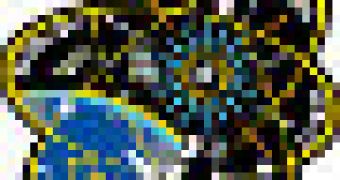NASA officials announce that the space shuttle Endeavor will be rolled out to its launch pad on Wednesday, March 9, about a week from today. The orbiter is currently being prepared for its final flight to the International Space Station (ISS).
It will take off from Launch Pad 39A at the Kennedy Space Center (KSC), in Florida, the only facility in the United States that can still accommodate the shuttle and its other components.
At this point, the spacecraft is in the KSC Vehicle Assembly Building (VAB), a cavernous structure that serves as a staging area. It's here that it was mated with its massive external fuel tank (EFT) and with the twin solid rocket boosters (SRB).
The launch data has been tentatively set for no earlier than April 19. The American space agency is in the habit of installing the shuttles at their launch site about a month before the start of each mission.
STS-134 will be the final flight that Endeavor will ever make. Upon its return, it will be cleaned of the toxic chemicals it contains, and then readied for transport at a museum, for public display.
The same fate awaits shuttle Discovery, which is currently attached to the ISS in low-Earth orbit (LEO). There is a high probability that the oldest orbiter in the US space fleet will end up at the Smithsonian Air and Space Museum, in Washington DC.
According to NASA, Endeavor's final rollout maneuver will begin at 8 pm EST (0100 GMT Thursday, March 10), and is expected to last for about six hours. The shuttle and its components will be moved atop the giant Crawler-Transporter, the second-largest tracked vehicle in the world.
During the STS-134 mission, the shuttle will deliver the Alpha Magnetic Spectrometer (AMS) particle detector and the ExPRESS Logistics Carrier-3 (ELC-3) open platform to the ISS.
The AMS is the most expensive experiment ever flown to space, at around $2 billion dollars. Its mission is to search for signs that would confirm the existence of dark matter and dark energy.
It will do so by analyzing high-energy cosmic particles that will slam into it. On the other hand, the ELC-3 is a storage platform that will be affixed outside the ISS during a spacewalk.
It will basically act as a shelf, on which astronauts will be able to store space parts and other components, for later use. As the shuttle program is about to come to an end this year – following Atlantis' last launch in late June – the station needs to be stocked up on supplies.

 14 DAY TRIAL //
14 DAY TRIAL //